|
|
|
|
Migration velocity analysis based on linearization of the two-way wave equation |

|
|---|
|
deltaS
Figure 1. Three slowness perturbations that will be used in the forward operator. |
|
|
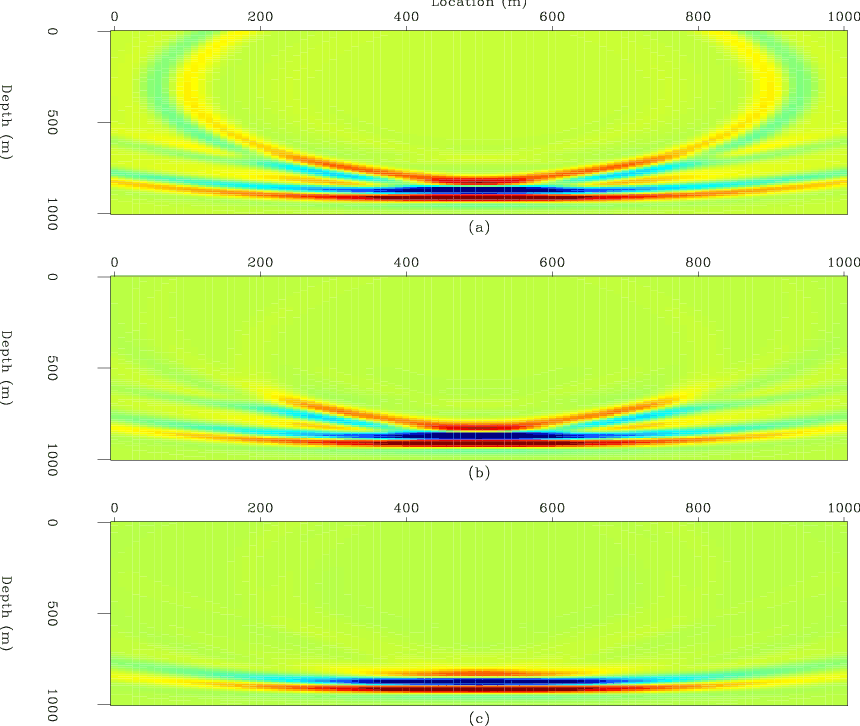
|
|---|
|
deltaI
Figure 2. The three image perturbations corresponding to slowness perturbations in Figure 1, produced by the forward scattering operator. |
|
|
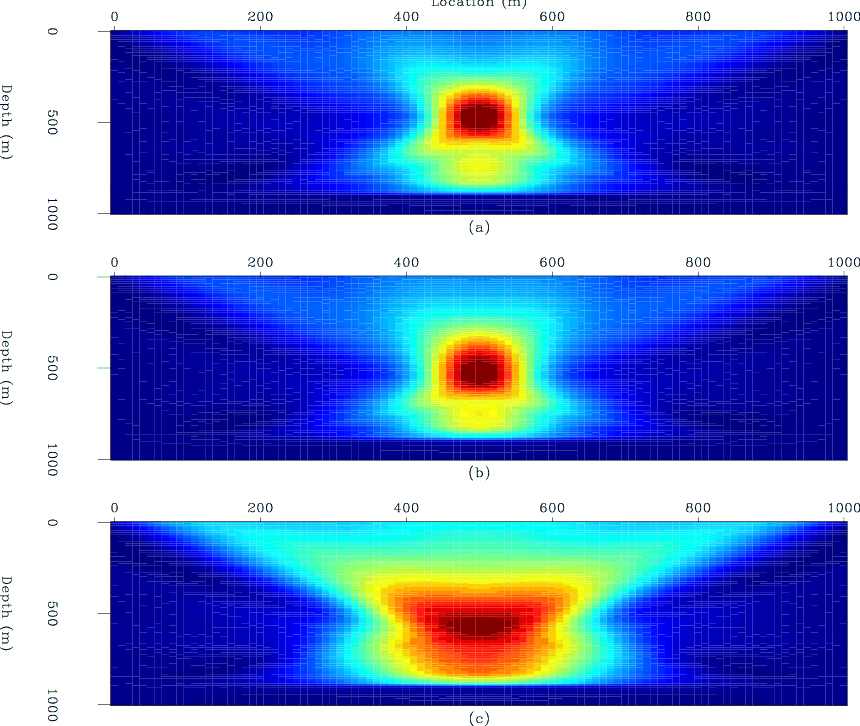
|
|---|
|
deltaS2
Figure 3. The reconstructed slowness perturbations by the adjoint scattering operator. |
|
|
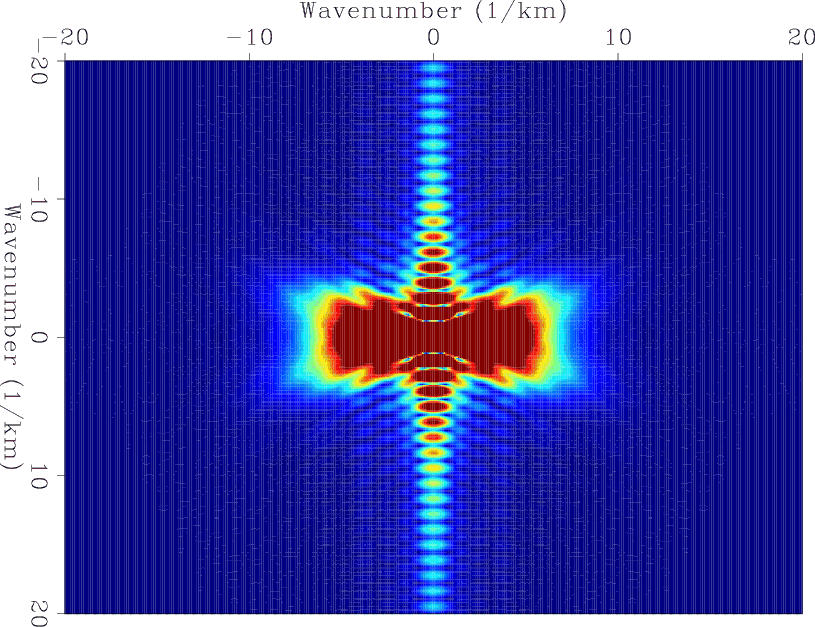
|
|---|
|
spect
Figure 4. The Fourier transform of spike response in Figure 3(a). |
|
|
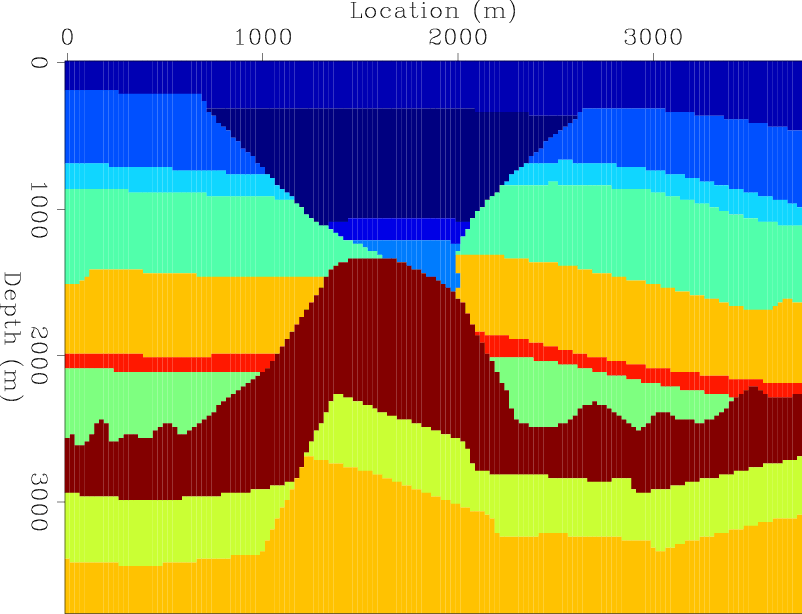
|
|---|
|
velbg3
Figure 5. The background velocity model for the second test. |
|
|
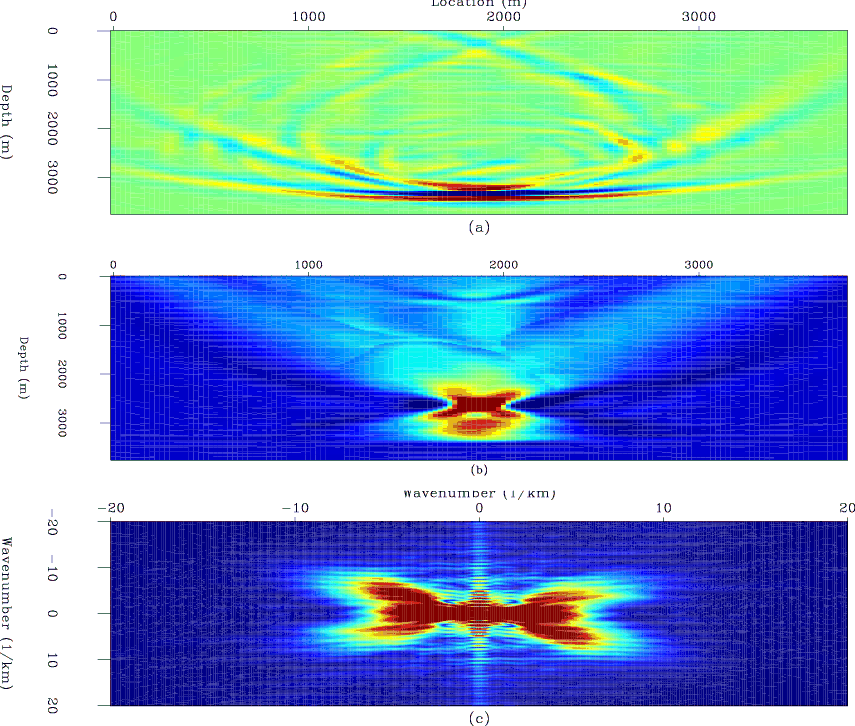
|
|---|
|
results3
Figure 6. Using the background velocity in Figure 5, (a) the image perturbation, (b) reconstructed slowness perturbation, and (c) the Fourier transform for the reconstructed slowness perturbation. |
|
|
|
|
|
|
Migration velocity analysis based on linearization of the two-way wave equation |